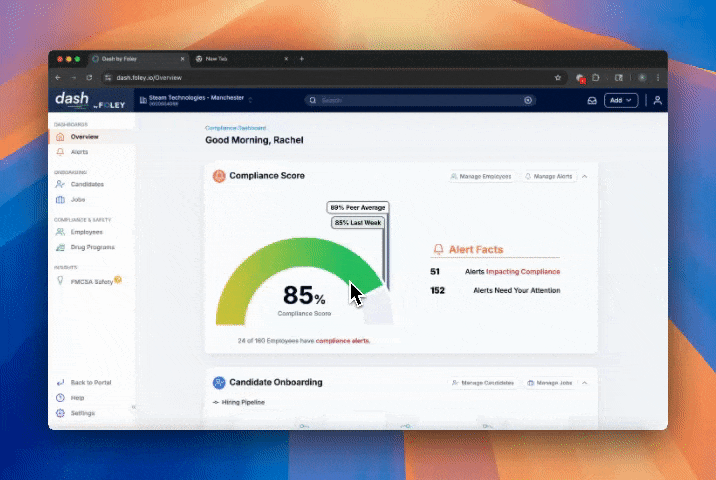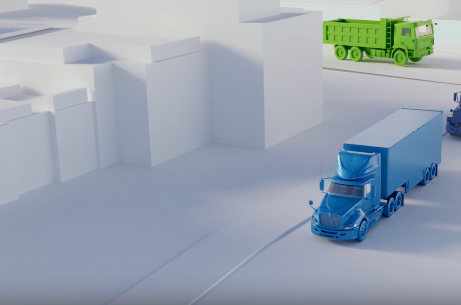DOT Physical: Diabetes Guidelines 2025

DOT Physical: Diabetes Guidelines 2025
To drive a commercial vehicle over 10,000 pounds, you need to pass a DOT (Department of Transportation) physical. The DOT physical isn’t something you need to be afraid of, but if you have diabetes or high blood sugar levels (or suspect you do), you may have some concerns about your ability to pass.
DOT regulations and medical guidelines regarding diabetes continue to evolve. Below is an updated and clarified guide, incorporating the 2024/2025 changes and best practices.
Why Diabetes is Critical in DOT Physicals
Diabetes—especially when uncontrolled—can cause fatigue, dizziness, blindness, kidney disease, neuropathy, or episodes of hypoglycemia, all of which can compromise a driver’s safety. Drivers with undiagnosed or poorly managed diabetes are at increased risk of events that may impair their ability to safely operate a commercial motor vehicle (CMV).
Because of this risk, DOT physicals scrutinize diabetes status closely. If you have a known diagnosis—or clinical signs or lab values suggest diabetes—the examiner will dig deeper.
What the FMCSA / DOT Actually Requires
Insulin-Treated Diabetes (ITDM) Is No Longer Automatically Disqualifying
Key requirements under the rule include:
-
The driver must otherwise meet the standard physical qualification criteria under § 391.41.
-
Before the DOT physical exam, the individual must be evaluated by their treating clinician, who must complete the Insulin-Treated Diabetes Mellitus Assessment Form (MCSA-5870).
-
The completed MCSA-5870 (signed by the treating clinician) must be provided to the medical examiner no later than 45 days before or after the physical exam (per the statute).
-
The medical examiner must review the MCSA-5870, consider the driver’s glucose records and control, and determine whether any complications of diabetes might impair safe driving.
-
For drivers using insulin, self-monitoring of blood glucose (SMBG) data from an electronic glucometer (with timestamps and downloadable data) is required. The driver must provide at least 3 months of compliant SMBG data for a 12-month certification; if SMBG records aren’t available, only a 3-month certificate may be granted.
-
Anyone with severe non-proliferative diabetic retinopathy or proliferative diabetic retinopathy is disqualified from operating CMVs.
-
If a driver experiences a severe hypoglycemic episode (e.g. requiring assistance, loss of consciousness, seizure), that event must be reported, evaluated by the treating clinician, and a new MCSA-5870 completed before returning to duty. Until then, they may not legally operate.
Thus, insulin use is no longer an automatic “no,” but it requires stricter documentation, data, and oversight.
Non-Insulin Diabetes & Lab Work
For drivers with diabetes managed by diet, oral medications, or non-insulin injectables:
-
You must bring recent labs to your DOT physical (fasting blood glucose, HbA1c).
-
The DOT physical examiner will check whether your diabetes is controlled, and evaluate for complications (e.g. kidney disease, neuropathy, vision issues).
-
The maximum valid period for a medical certificate remains 12 months for drivers with diabetes.
It’s worth noting that the FMCSA rule itself does not mandate a specific A1c cutoff as a rigid threshold. The treating clinician and medical examiner may use HbA1c as one factor, but must jointly determine whether control is adequate. The article’s statement that drivers must have an A1c < 10% is a practical guideline many examiners use—but it is not explicitly required in the federal rule.
New or Recent Updates to Watch
-
Updated forms expiration: The FMCSA updated the OMB expiration dates on key medical forms (MCSA-5875, 5876, 5870, 5871) to December 31, 2024. Medical examiners are encouraged to switch to the newer versions as soon as possible. Partnering with a third-party compliance expert can help ensure you're working with FMCSA-certified physicians who are trained to follow DOT protocols.
-
Medical Examiner’s Handbook 2024: The 2024 edition of the Medical Examiner’s Handbook is now the authoritative guide for examiners and health professionals.
-
Greater scrutiny on comorbidities: Drivers with diabetes often have coexisting hypertension, cardiovascular disease, kidney impairment, or retinopathy. Examiners are increasingly vigilant in reviewing medical history, labs, and evidence of complications when certifying drivers. This makes it even more important for you to keep organized, compliant driver files to reduce the risk of failing safety audits.
-
Data expectations: Electronic SMBG records are not just “nice to have”—they are a regulatory requirement for drivers on insulin. Examiners expect downloadable readings with dates and times. Proper DOT recordkeeping is essential for compliance.
Related guide: Compliant Driver Qualification Files (DQFs) Made Simple
How to Improve Your Chances of Passing with Diabetes
If you have diabetes (or suspect you might), here are best practices to reduce friction at your DOT physical:
-
Keep your blood sugar consistently controlled. Avoid wide swings or frequent hypoglycemic events.
-
Use an electronic glucometer that stores readings with timestamps, and maintain at least 3 months of data if on insulin.
-
Visit and coordinate with your treating clinician to complete the MCSA-5870 well ahead of your physical.
-
Bring all relevant lab results (fasting glucose, HbA1c, kidney function, etc.) to the exam.
-
Address and document any diabetic complications (eyes, kidneys, nerves) clearly.
-
Follow a healthy diet, regular exercise, and maintain other cardiovascular risk factors (BP, lipids).
-
Stay current on medication adherence and document it.
If you initially fail or are denied certification, work with your provider to bring your control into range—and document improvements—before retesting.
How a Compliance Partner Can Help
With Foley’s DOT physical software, managing diabetes compliance becomes part of an automated and audit-ready workflow. Foley can auto-order a driver’s DOT physical up to 60 days before their medical certificate expires, ensuring no lapses in certification. Once the exam is completed, the new medical certificate is uploaded and stored alongside prior ones in a single digital archive, giving you a “source of truth” that helps avoid missing or expired documents during safety audits.
Learn how Elberta Logistics eliminated manual DOT compliance management with Foley
You can also set up alerts or notifications for drivers whose health clearance require more frequent review, so your team never overlooks a borderline case. And if drivers are spread across the country, Foley’s referral network of FMCSA-certified medical examiners helps you steer them to approved providers no matter where they’re located.
Questions? Reach out to speak with a Foley compliance specialist today.
Related Articles
DOT Physical Blood Pressure: 2025 & Beyond — Updated Guidance
FMCSA Extends CDL, Medical Card Expiration Date Waiver Again
Can CDL Drivers Get a DOT Physical in Any State?
.png)


